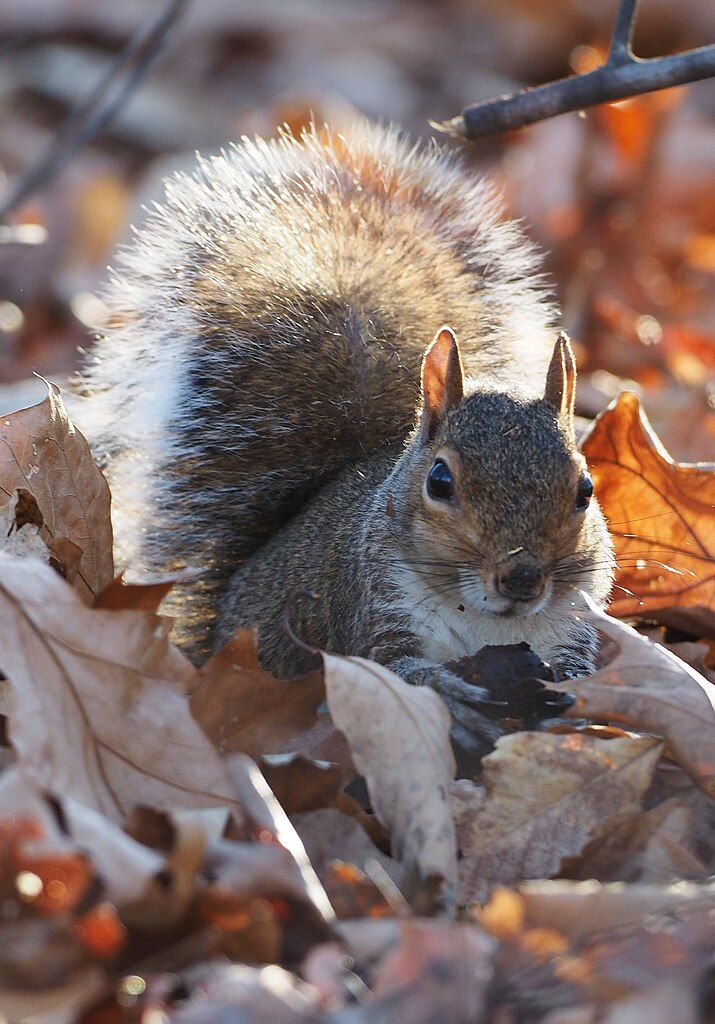
3 November 2023
This week is the coldest we’ve had since last March or early April. Squirrels are getting serious about winter in @YardGoneWild‘s North Carolina backyard.
(photo of squirrel in Woodbridge, VA from Wikimedia Commons)

3 November 2023
This week is the coldest we’ve had since last March or early April. Squirrels are getting serious about winter in @YardGoneWild‘s North Carolina backyard.
(photo of squirrel in Woodbridge, VA from Wikimedia Commons)

2 November 2023
There’s an object in the sky that we can barely see through a telescope equipped with special filters. Even though it’s faint to us the Hubble Space Telescope assures us this object is six times larger than the moon.
The Cygnus Loop Nebula is the expanding remnant of a supernova explosion that occurred 5,000 to 10,000 years ago. The little we can see of it is beautiful, especially a portion of the veil called the Witches Broom, pictured at top and on the right side of the complete nebula photo below. (The bright star, 52 Cygni, is in both photos.) Click here for a large beautiful photo of the Witches Broom at NASA’s Astronomy Picture of the Day.

There is more to this nebula than meets the eye. In addition to visible light it’s emitting radio waves, infrared, X-rays and ultraviolet. Here it is in the ultraviolet range.

Since birds can see ultraviolet light the nebula probably looks brighter and better to them.

Space.com’s video shows the nebula’s size and location in the Cygnus constellation.
Six times larger than the moon!
If we could see what birds see, what would that look like? Here’s my best guess, by superimposing the nebula’s UV image next to the moon.
Moon at Thrissur (Wikimedia) + Cygnus Loop Nebula comparison
It’s amazing what we humans are missing.
(photos from Wikimedia Commons; click on the captions to see the originals)

1 November 2023
If you find a small spiny capsule on the forest floor that opens to reveal two to three nuts (in this case two are nicely packed together) you’ve found beechnuts. Without even looking up you can be sure you’re near an American beech (Fagus grandifolia).

The fruit [of Fagus grandifolia] is a triangle-shaped shell containing 2–3 nuts inside, but many of them do not fill in, especially on solitary trees. Beech nuts are sweet and nutritious, can be eaten raw by wildlife and humans, or can be cooked. They can also be roasted and ground into a coffee substitute.
— Wikipedia account: American beech, Fagus grandifolia

Beechnuts can be eaten raw? Well, it’s complicated. Foraging Beech Nuts explains that it’s best to let the capsules dry out for 2-3 weeks and then cook the nuts because some people get throat irritation from the raw seed coating.
In Pittsburgh’s parks beechnuts can be hard to find because they are so popular with deer and squirrels. Looking for a beech without looking up? Here’s another clue.
Beech drops (Epifagus virginiana) are parasitic on beech tree roots so if you see these well camouflaged plants you are definitely near an American beech. Read about them at On The Beech.
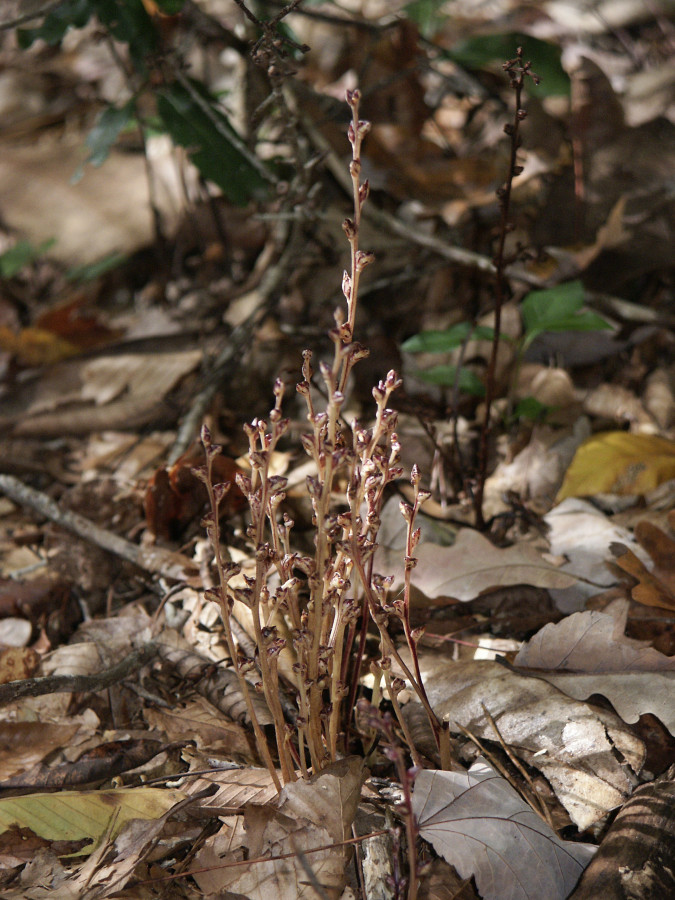
Looking up at American beech trees this month you’ll see brown beech leaves clinging to the branches.
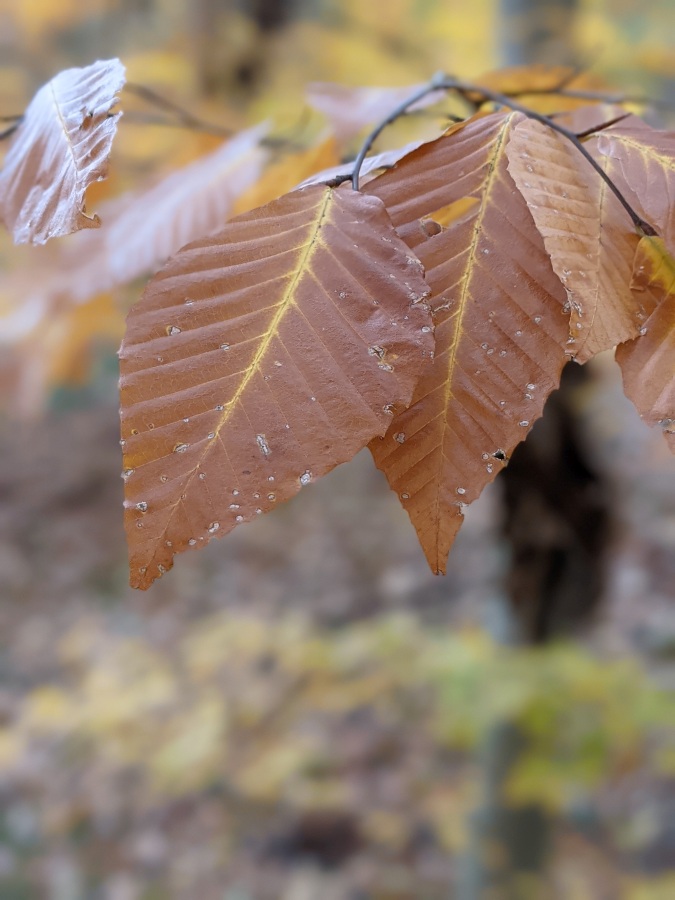
Its buds are distinctive: long, pointed and golden brown like its fall leaves.

The trunk has smooth gray bark.

And at the end of winter, small American beeches have pale, rattling leaves that make them stand out in the forest.

All the beechnuts will be eaten or hidden by the end of winter.
p.s. If you’re my age you probably remember Beech-Nut chewing gum. Were there beech nuts in it? No, that was the name of the company. The gum’s claim to fame was its peppery peppermint zing.
Whatever happened to the candy? The candy division of Beech-Nut went defunct in 1976. Read about the Beech-Nut company here.
(photos by Kate St. John except for the beech drops photo by Scott Zona via Flickr Creative Commons license)

31 October 2023
This month we started with new pumpkin gourds …
… carved some into jack o’lanterns …

… or applied stickers or paint to make faces.

If you used paint or stickers make sure they’re non toxic. When old pumpkins are outdoors …

… someone will eat them. This is where non-toxic paint is important!


If you’re not sure about your pumpkins, be careful where you dispose of them so that the critters who like to eat them stay healthy.
Happy Halloween!
(photos from Wikimedia and by Kate St. John, credits are in the captions)
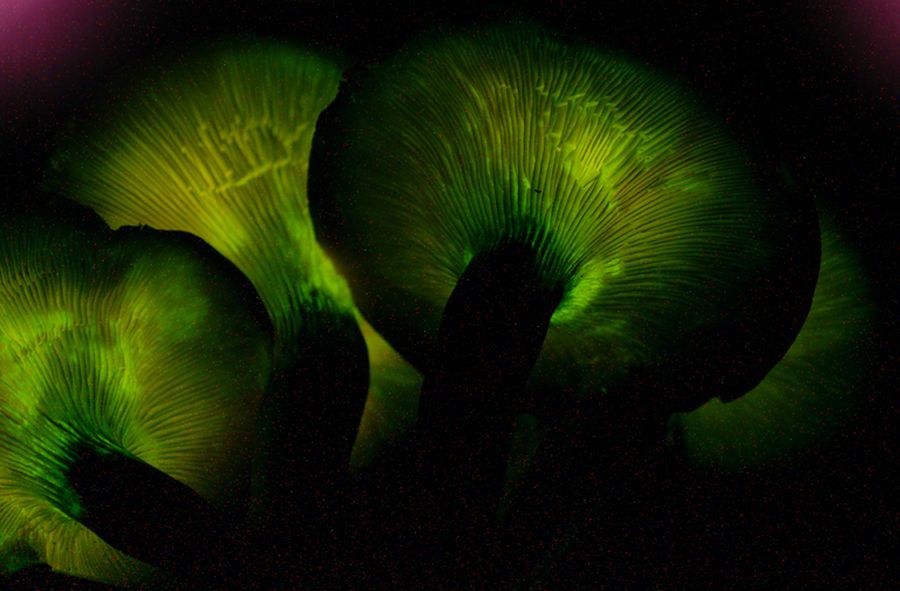
30 October 2023
If you’ve only seen Jack O’Lantern mushrooms (Omphalotus olearius) during the day you may have thought they were named for their orange pumpkin-like color.
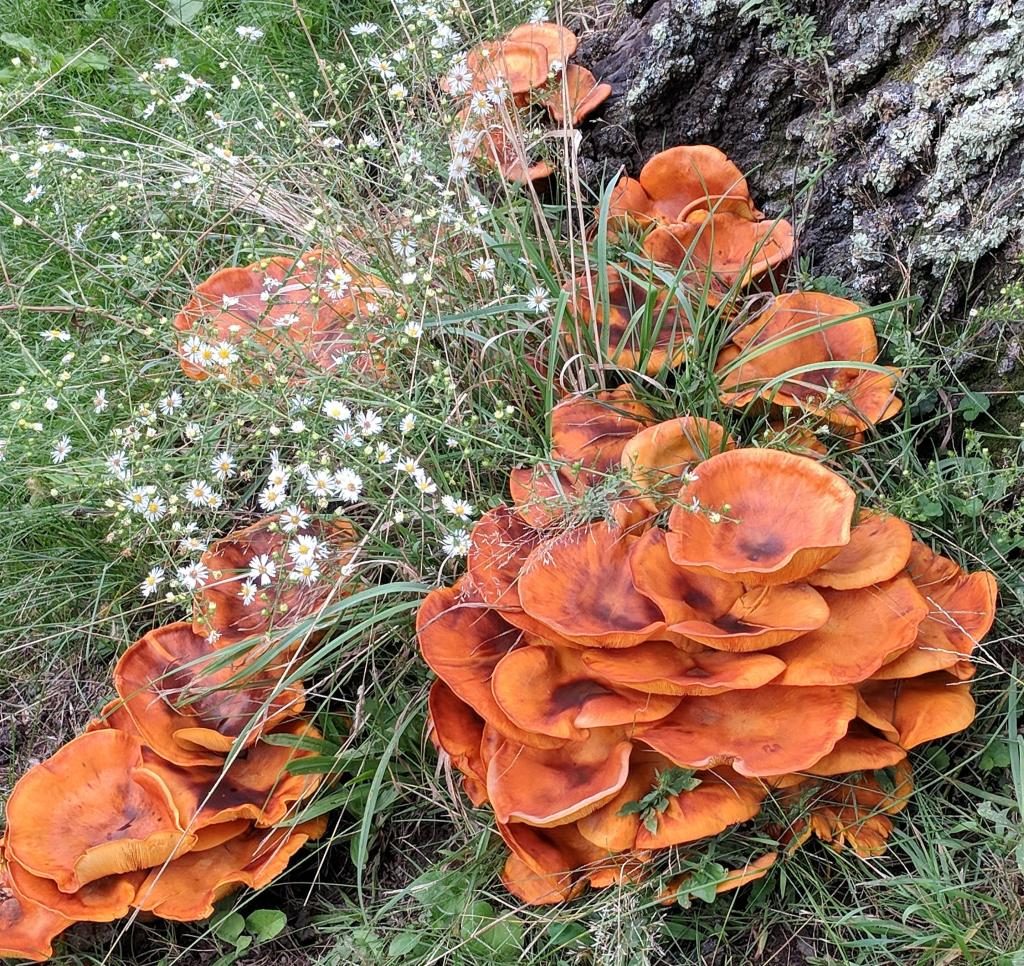
Instead they are aptly named because they glow green in the dark, as shown in the top photo.
Perhaps, like Armillaria mushrooms, Omphalotus olearius is bioluminescent because of the chemical reaction they use to consume decaying wood. Armillaria‘s chemical reaction glow is described in this vintage article on foxfire.
Jack O’Lantern is one of only about 112 species of fungi that are bioluminescent. Find out more at 10 Bioluminescent Mushrooms That Glow in the Dark.
p.s. Never eat Jack O’Lantern (Omphalotus olearius). It is poisonous!
(photos from Wikimedia Commons & Kate St. John; click on the Wiki caption to see the original)
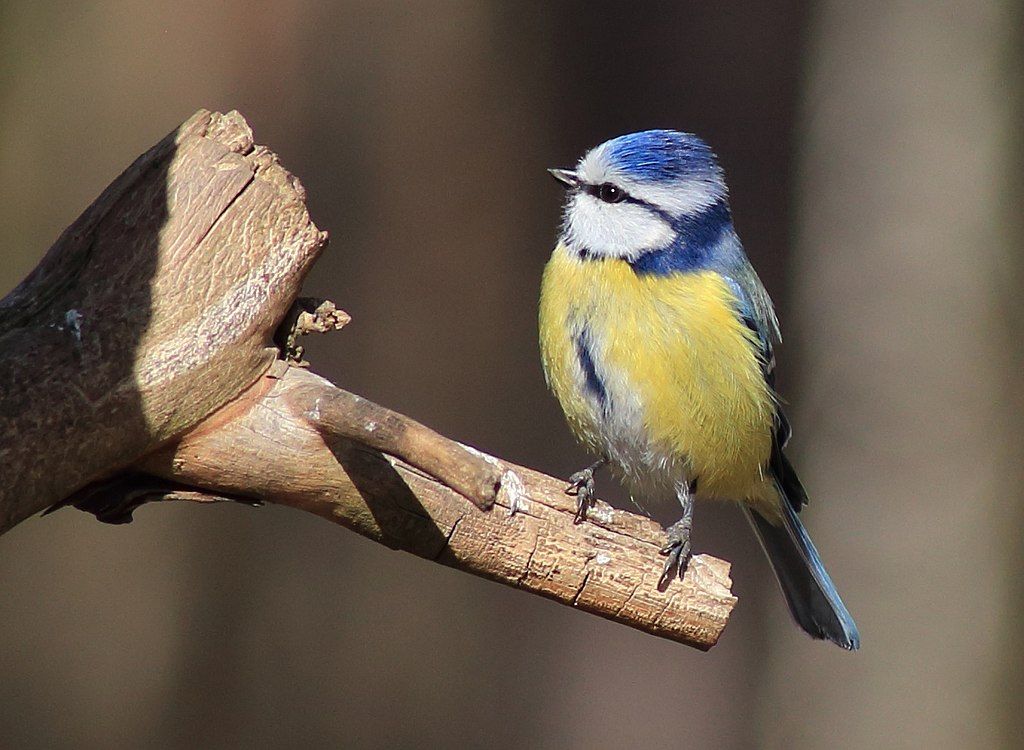
29 October 2023
Though 70% of the songbirds in our field guides have sexes that look the same to us, this isn’t true from the birds’ point of view. Birds can see ultraviolet light (we cannot) and often have plumage differences in the ultraviolet range. With the invention of inexpensive UV viewing equipment, scientists looked at birds and were amazed at what they found. 90% of the species tested had differences between males and females under UV light. We humans just can’t see it.
Eurasian blue tits (Cyanistes caeruleus), shown at top, were one of the first wild birds examined in the ultraviolet range. Both sexes look alike … or do they?
Using a spectrophotometry probe to scan the feathers of wild-caught birds, Andersson and his colleagues discovered that blue tits themselves have no problem telling males from females: Males have a patch of feathers on the crown of the head that strongly reflects UV light; females do not.
— NWF: True Colors: How Birds See the World
This marked up photo gives you an idea of how a male might look if only we could see UV.
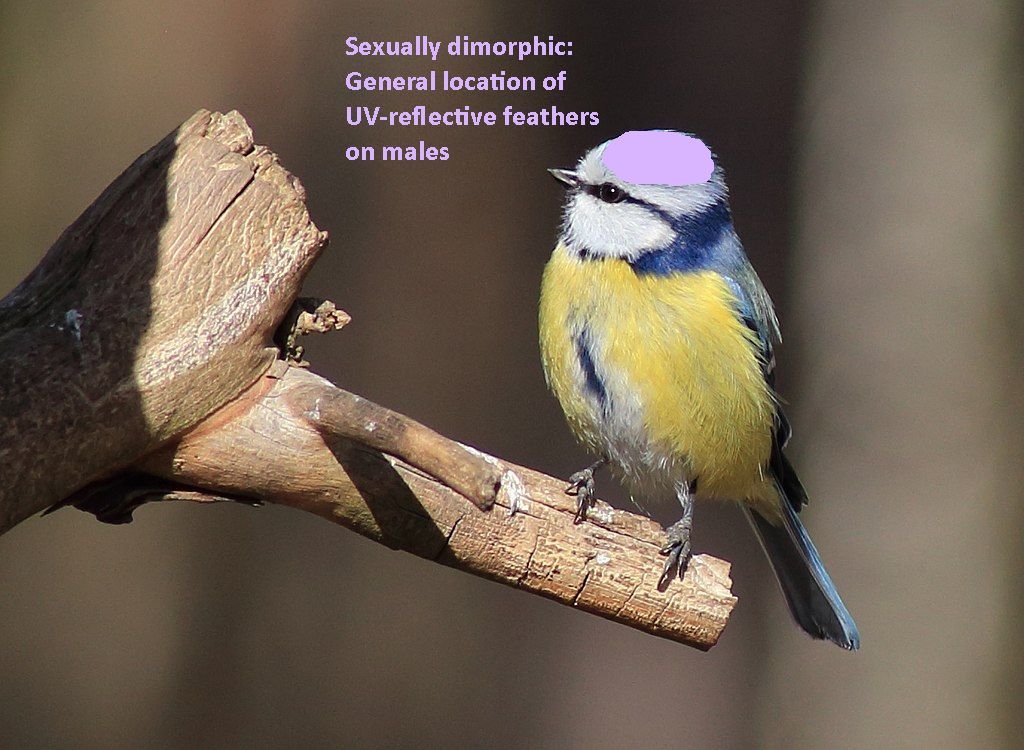
Both sexes of yellow-breasted chats (Icteria virens) look the same from afar, though in the hand the sexes can be distinguished (interior mouth color for instance). A 2004 study, Sexual dichromatism in the yellow-breasted chat, detected that the male’s throat has ultraviolet colors that make it much brighter than the female’s.
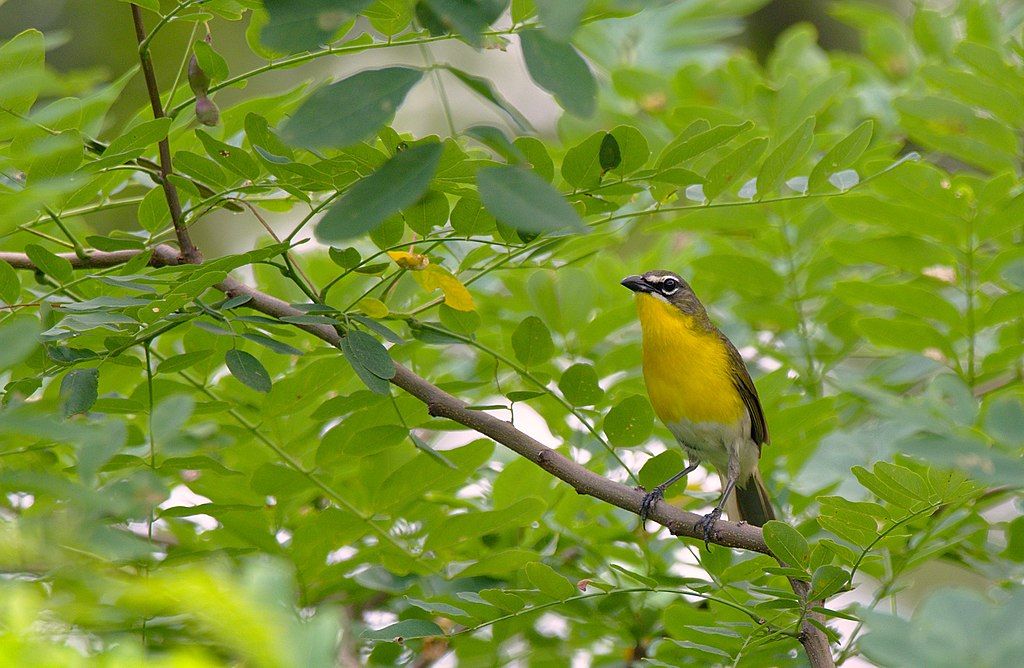
Here’s what it might look like if only we could see it.
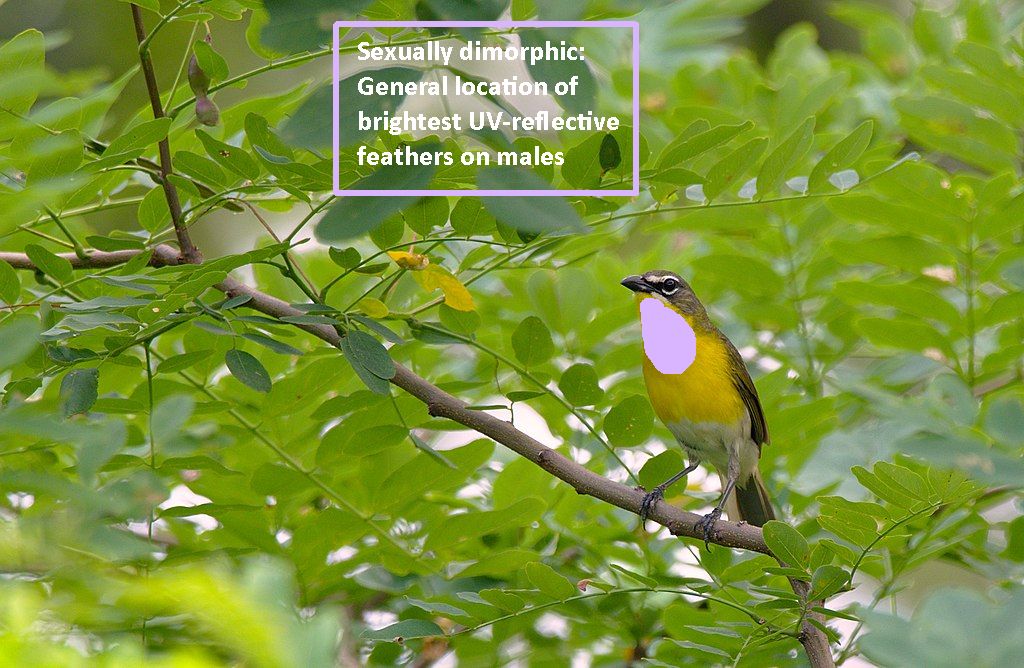
In 2002 scientists studied ultraviolet plumage in picui doves (Columbina picui) of South America. Males and females look much the same to our human eyes but are dimorphic in the UV range.
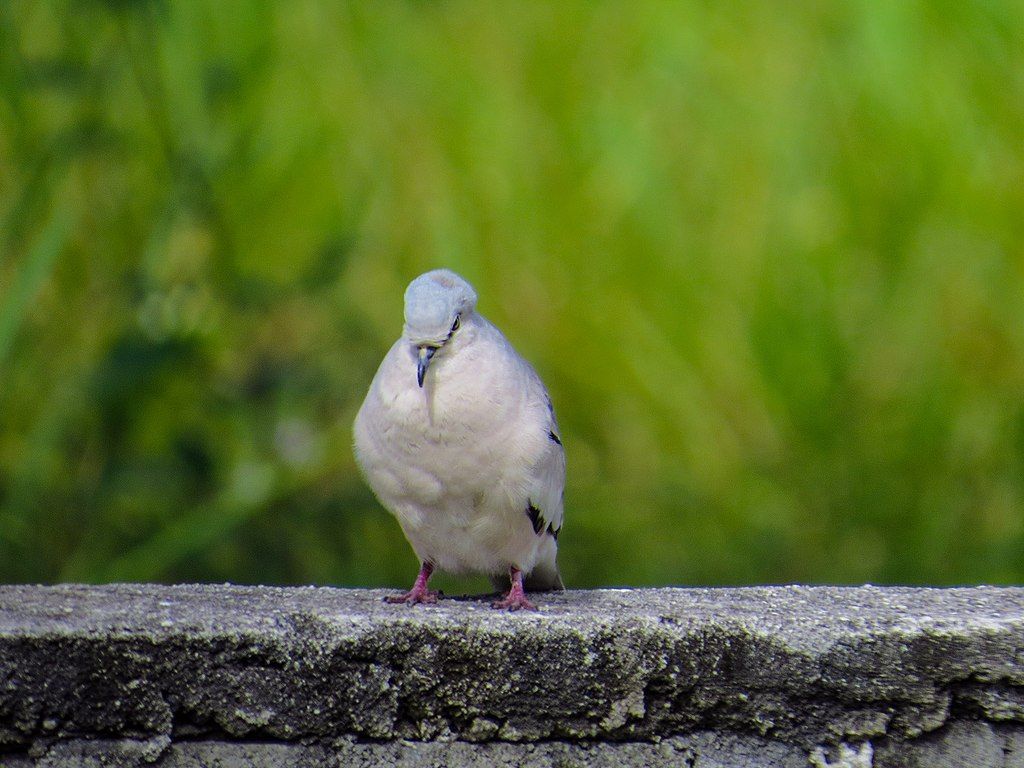
A lady dove sees so much more!
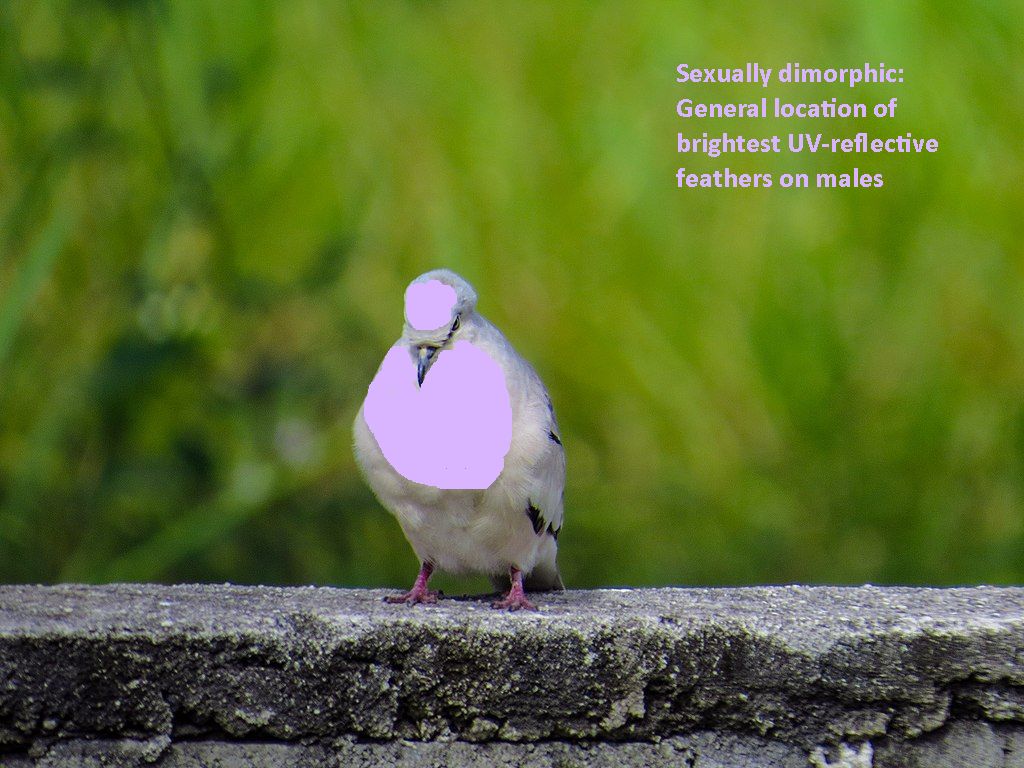
Apparently most birds are sexually dimorphic in ultraviolet including cedar waxwings, barn swallows, mockingbirds and western meadowlarks. According to True Colors: How Birds See The World, biologist Muir Eaton scanned the plumage of museum study skins of 139 songbird species in which males and females appear alike — but they aren’t alike under UV. He concluded, “To the birds themselves, males and females look quite different from one another.”
For more information see:
It’s amazing how much we humans are missing.
(credits are in the captions with links to the originals)
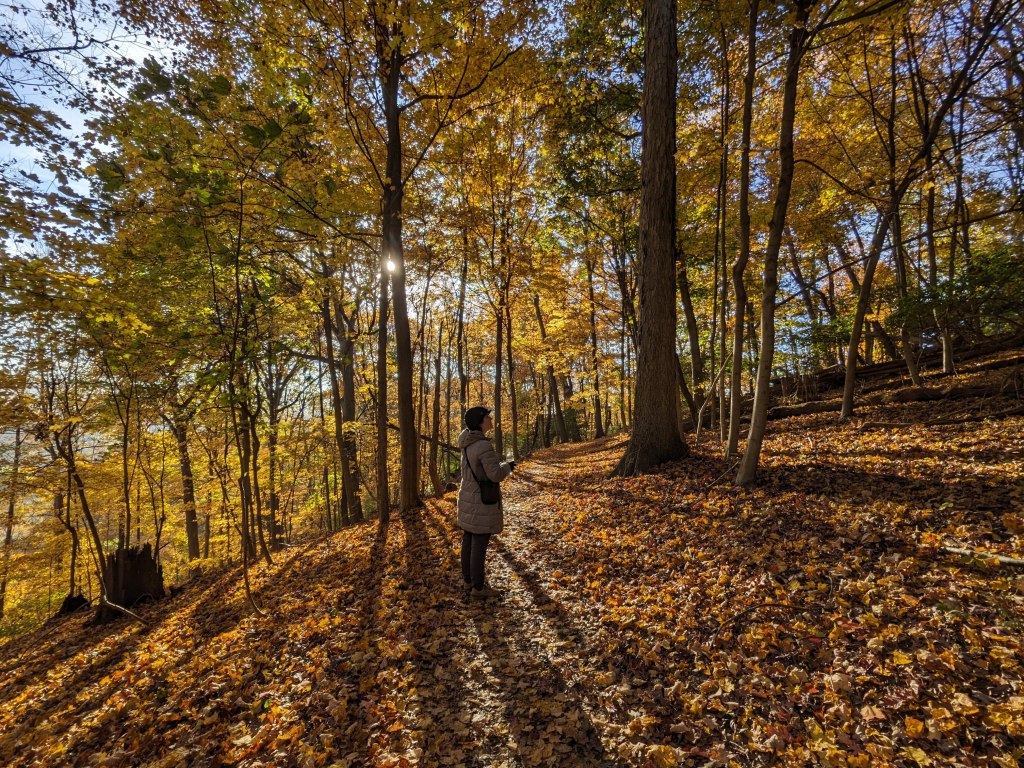
28 October 2023
The last full week of October brought beautiful weather and fall foliage to Southwestern Pennsylvania. Early mornings were chilly but warmed up quickly. Here are a few scenes from the week.
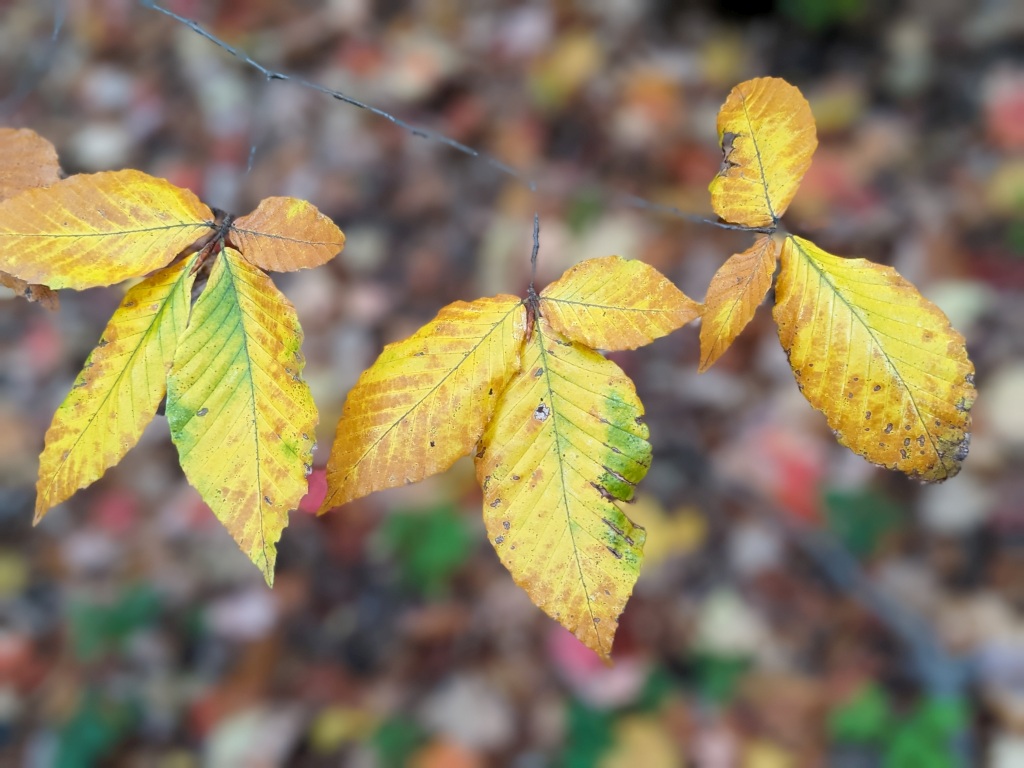
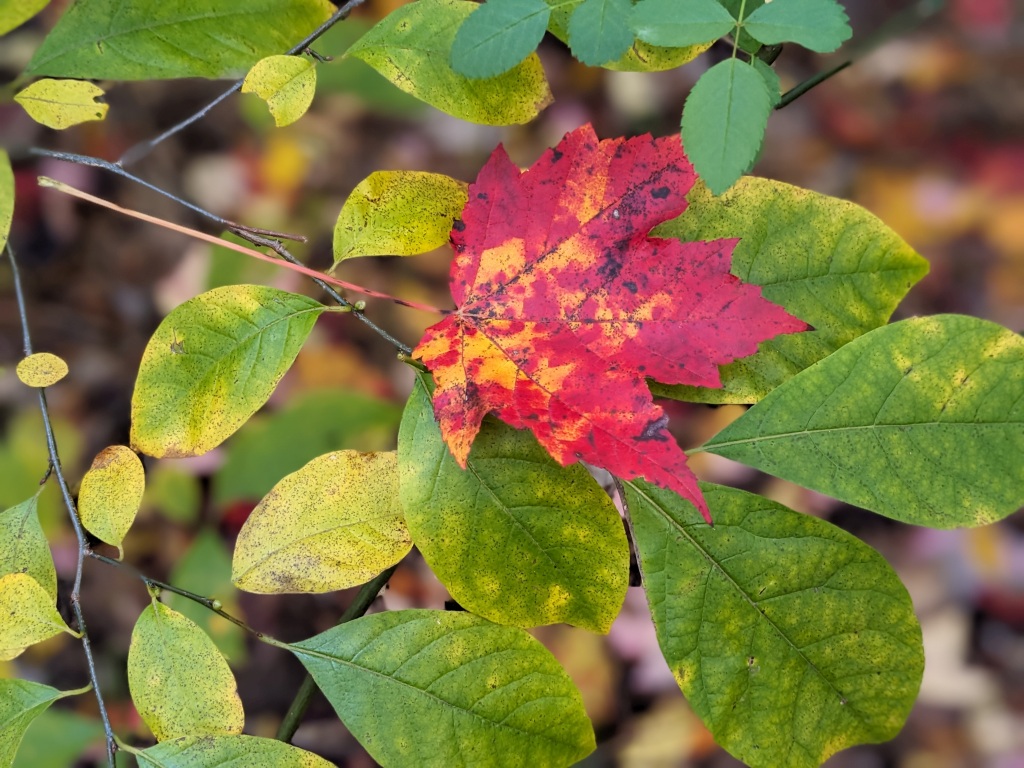


Golden yellow is a them from leaves to sky.

(photos by Kate St. John)
27 October 2023
In school we learned geography on flat maps using the Mercator projection. Google Maps uses a version called Web Mercator.

The Mercator projection that transforms our 3-dimensional Earth into 2-dimensions was invented in 1569 for use in navigation, which is why Google uses it. Unfortunately it totally distorts the size of land closer to the poles. It makes Greenland look big, maybe bigger than Africa. New Zealand is often cropped off this map.
The animation at top alternates between the Mercator projection and each country’s actual relative size. Hello, Northern Hemisphere, you aren’t as big as you think you are!
If we correct for size, as in the Gall-Peters projection, we mess up shapes and navigation.

Every flat map has distortions. This 6-minute video explains why. There is no right answer.
Making a flat map of the Earth is like trying to cut an orange peel to make it lay flat on the table. Good luck!
p.s. Here’s a screenshot from the thetruesize.com mapping tool that Johnny Harris mentions at the end of the video. Its initial screen demonstrates that the contiguous U.S. + China + India can easily fit into Africa with room to spare. Try it at thetruesize.com

(credits are in the captions; click on the links to see the originals)
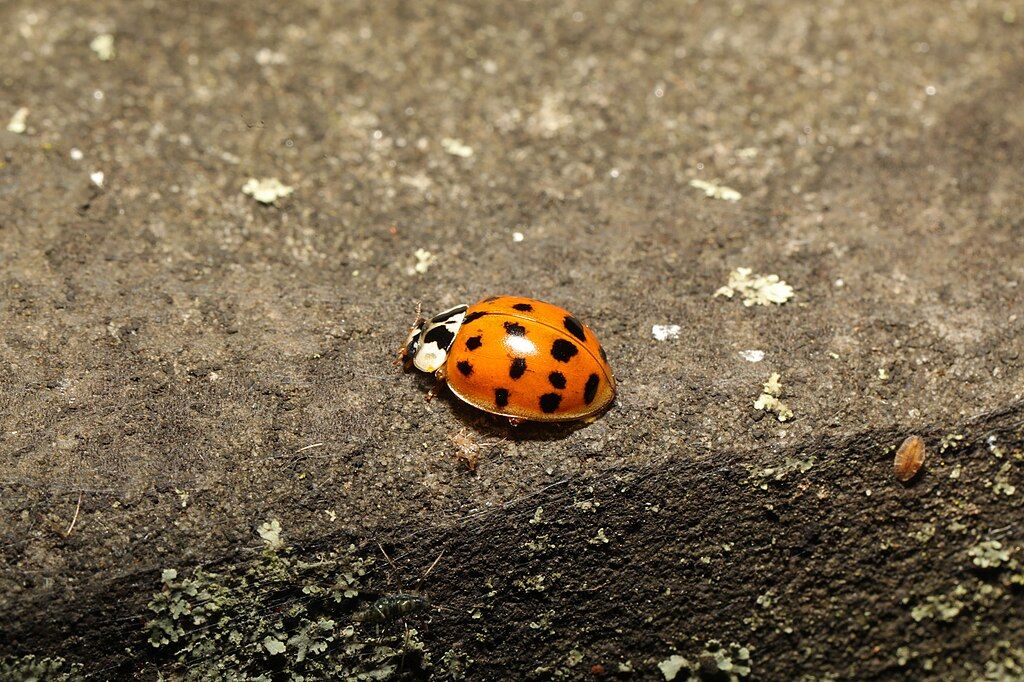
26 October 2023
Pittsburgh’s spotted lanternfly plague (Lycorma delicatula) is mostly over after recent cold weather knocked out lots of adults. It’s not a bad year for brown marmorated stink bugs, so are the insect plagues over? Not quite. Yesterday I happened into a swarm of Asian ladybeetles.
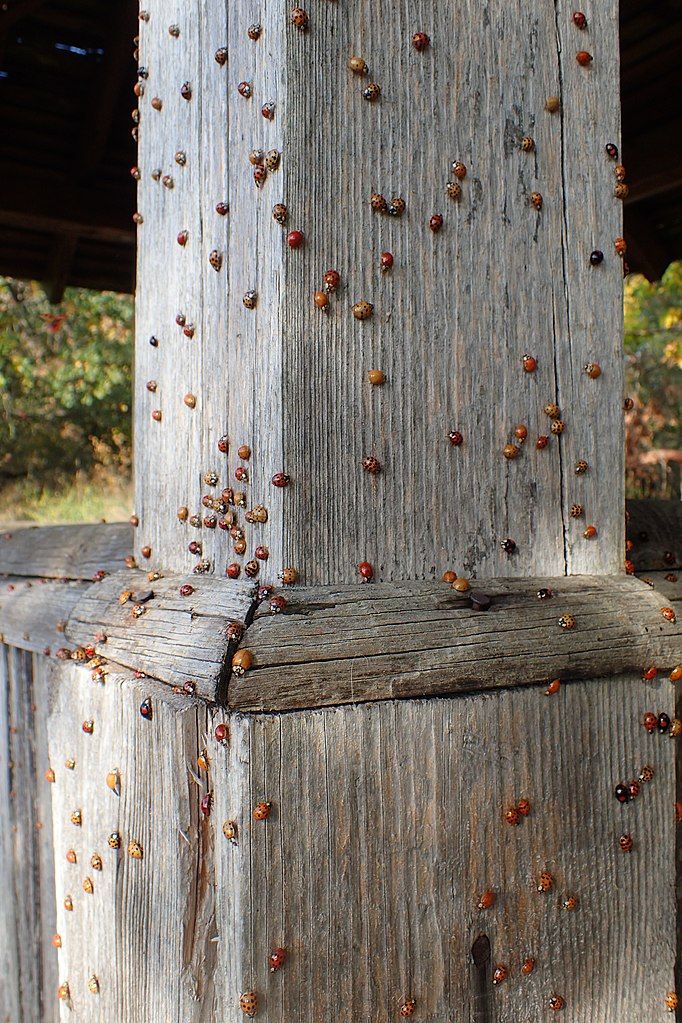
Asian ladybeetles (Harmonia axyridis) were imported to the U.S. 35 years ago as predators for aphids, adelgids, psyllids and scales. They do a good job and they caused no trouble until they were able to overwinter starting in 1993.
Ladybeetles overwinter as adults that gather in the fall with the goal of “The More The Merrier.” Attracted to sunlight and warmth reflecting off south or southwest-facing light-colored buildings, a few accumulate and attract others by sight and smell. Pretty soon the area is crazy-busy with ladybeetles as in the photo above.
The bugs are looking for cracks in which to spend the winter. If a crack leads to a warm place indoors, that’s even better.
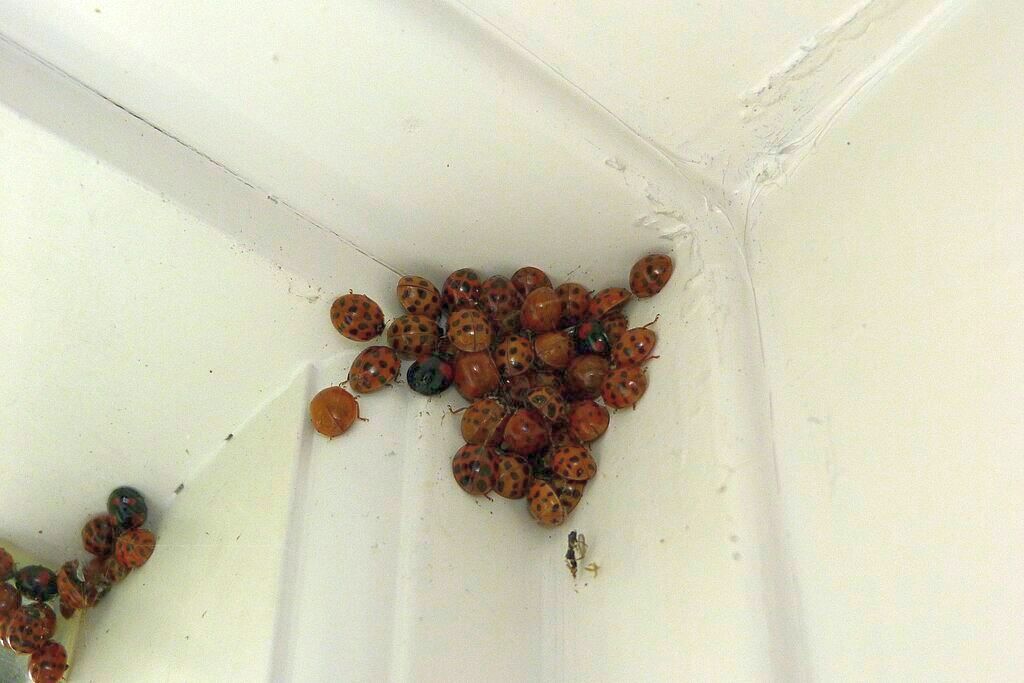
Once inside, the warmth can keep them active.
It is not uncommon for tens of thousands of beetles to congregate in attics, ceilings and wall voids, and due to the warmth of the walls, will move around inside these voids and exit into the living areas of the home.
In addition to beetles biting (which they do), they exude a foul-smelling, yellow defensive chemical which will sometimes cause spotting on walls and other surfaces. Most people are only annoyed by the odor of these chemicals. However, some individuals have reported experiencing an allergic reaction to the defensive excretions.
— Penn State Extension: Multicolored Asian Lady Beetle (Ladybug)
Penn State Extension has helpful advice on how to vacuum them (avoid getting them up into the machine!) at Multicolored Asian Lady Beetle (Ladybug).
The good news is: Have you seen a spotted lanternfly lately? Probably not! Winter is a great pest control system.
(photos from Wikimedia Commons; click on the captions to see the originals)
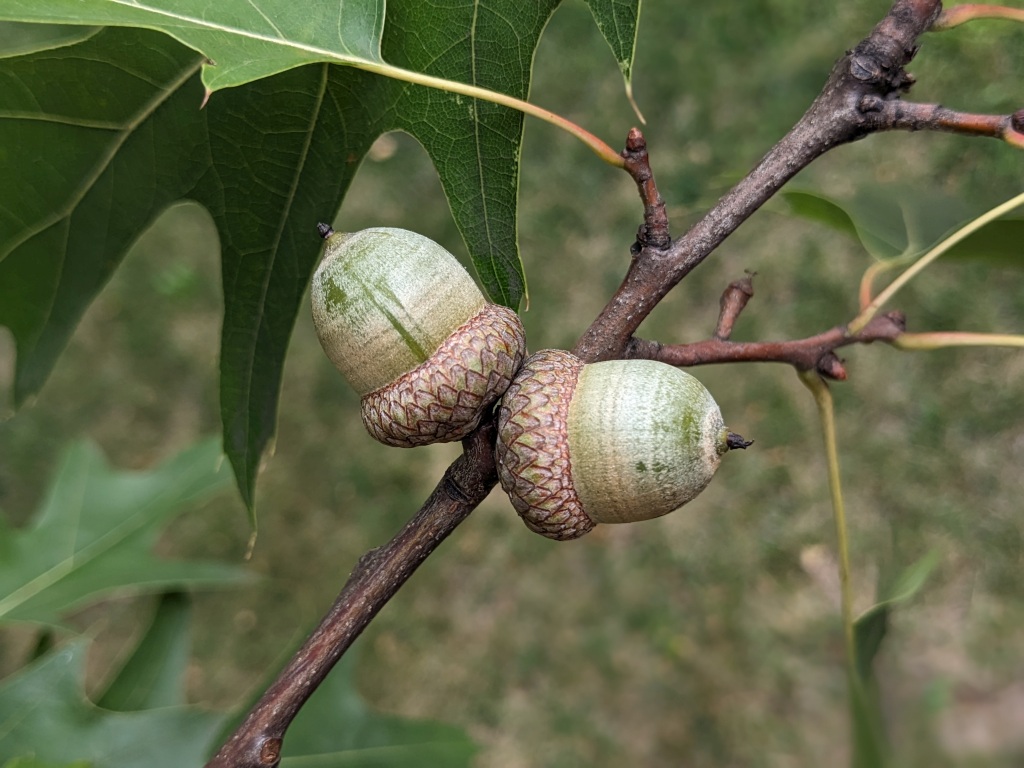
25 October 2023
By late October leaves and nuts are underfoot and still falling. Red oak acorns that were green on the branch in August litter the footpaths and sidewalks now.
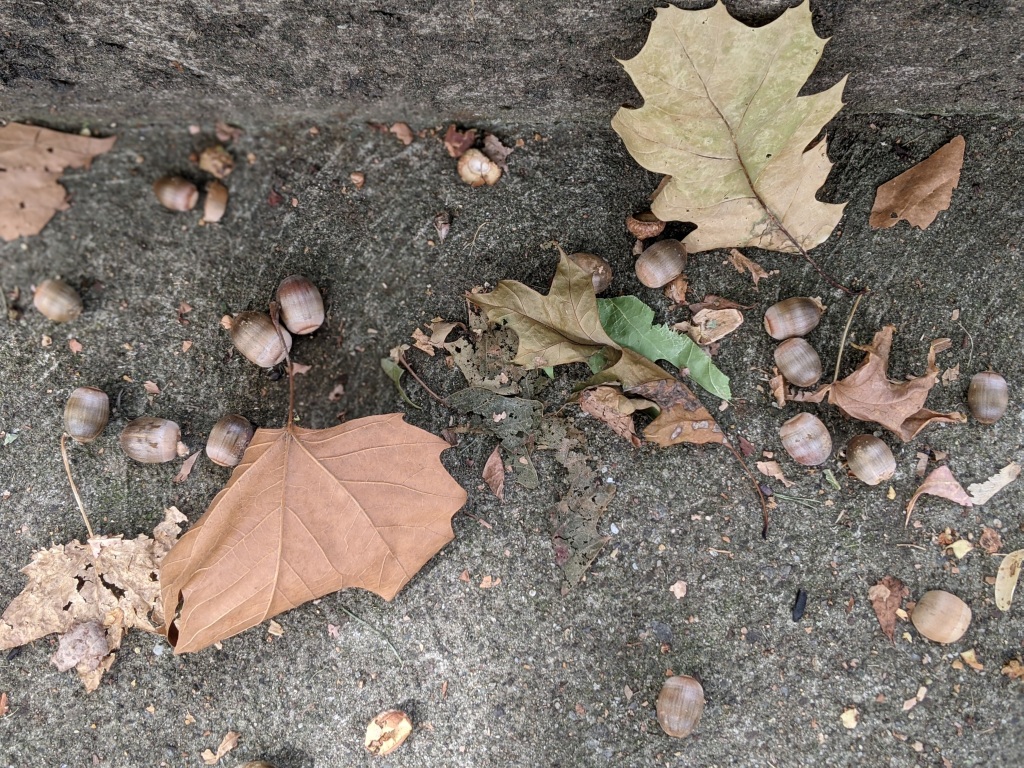
Underneath black walnut trees it’s hard not to misstep on the yellow husked nuts. You may even be hit by a black walnut detached and dropped by a squirrel gathering nuts above you. Squirrels save time by crawling all over the tree and detaching lots of nuts. Then they scurry down to collect them. Ouch!
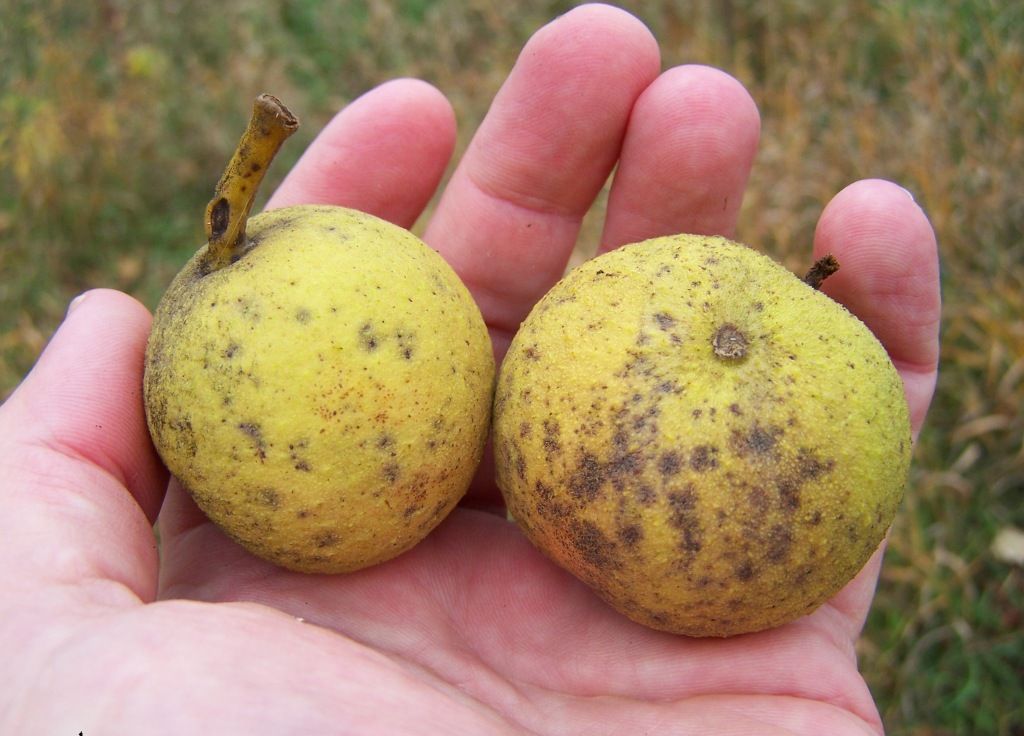
Keep looking down and you may find unusual nuts and seeds like these.
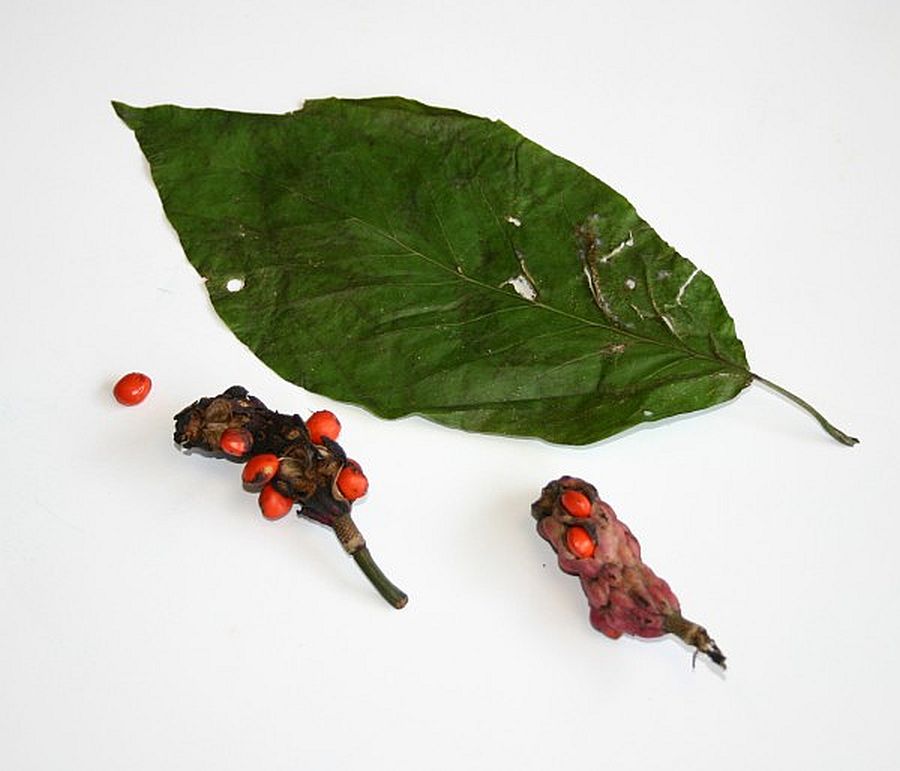
Even without leaves, you can identify the trees above you by knowing the nuts at your feet. This fall I’ll run a series on identifying nuts found in western Pennsylvania.
Meanwhile to kick it off …
Adam Haritan explains a few trees you can identify without even looking up in this 15-minute Learn Your Land video.
(credits are in the captions)